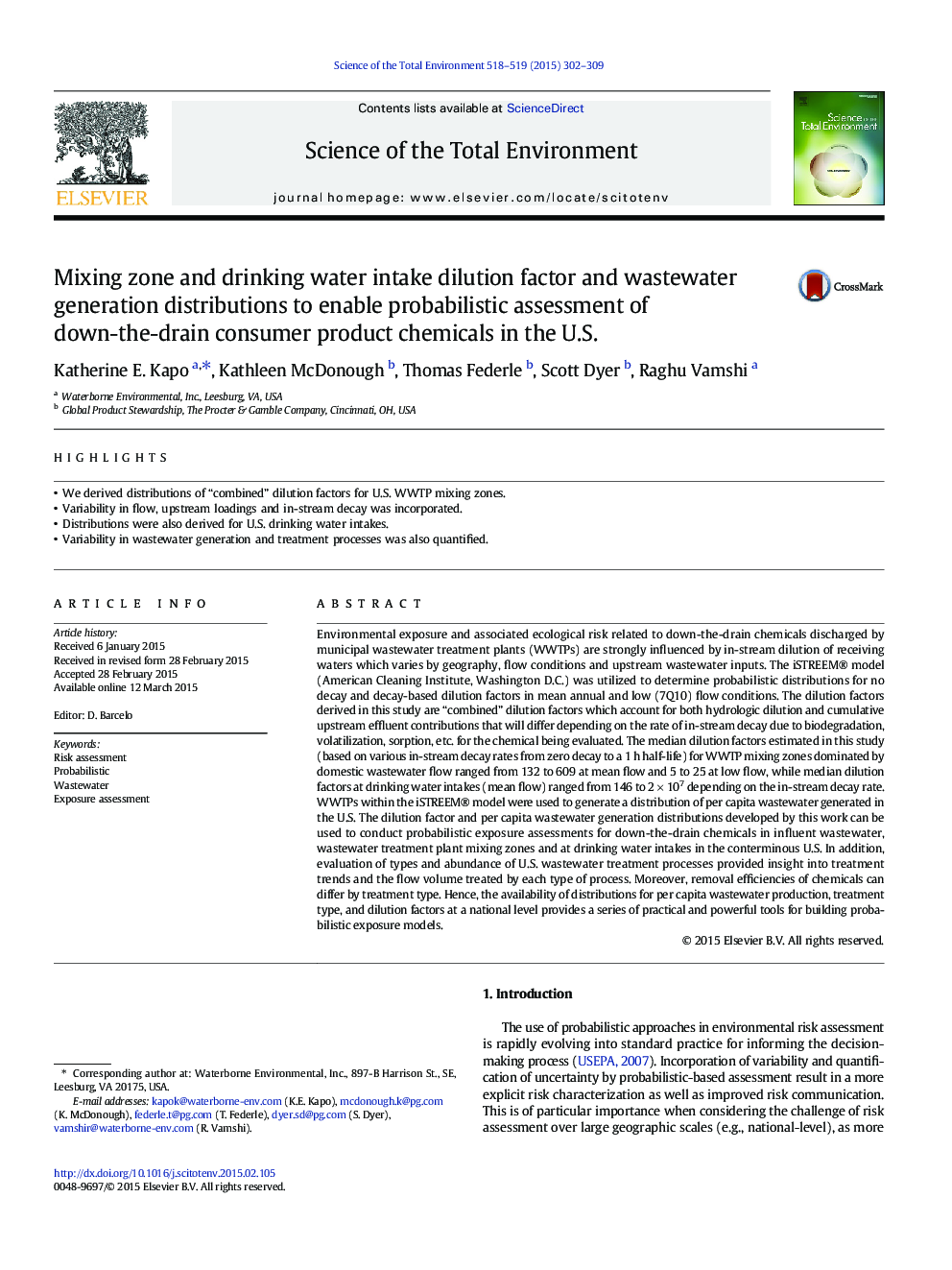| کد مقاله | کد نشریه | سال انتشار | مقاله انگلیسی | نسخه تمام متن |
|---|---|---|---|---|
| 6326854 | 1619761 | 2015 | 8 صفحه PDF | دانلود رایگان |
عنوان انگلیسی مقاله ISI
Mixing zone and drinking water intake dilution factor and wastewater generation distributions to enable probabilistic assessment of down-the-drain consumer product chemicals in the U.S.
ترجمه فارسی عنوان
محصوالت مخلوط کردن و فاکتور رقیق کننده مصرف آب آشامیدنی و توزیع تولید فاضلاب برای ارزیابی احتمالی مواد شیمیایی مصرفی کم مصرف در ایالات متحده
دانلود مقاله + سفارش ترجمه
دانلود مقاله ISI انگلیسی
رایگان برای ایرانیان
کلمات کلیدی
ارزیابی ریسک، احتمالاتی فاضلاب، ارزیابی قرار گرفتن در معرض،
موضوعات مرتبط
علوم زیستی و بیوفناوری
علوم محیط زیست
شیمی زیست محیطی
چکیده انگلیسی
Environmental exposure and associated ecological risk related to down-the-drain chemicals discharged by municipal wastewater treatment plants (WWTPs) are strongly influenced by in-stream dilution of receiving waters which varies by geography, flow conditions and upstream wastewater inputs. The iSTREEM® model (American Cleaning Institute, Washington D.C.) was utilized to determine probabilistic distributions for no decay and decay-based dilution factors in mean annual and low (7Q10) flow conditions. The dilution factors derived in this study are “combined” dilution factors which account for both hydrologic dilution and cumulative upstream effluent contributions that will differ depending on the rate of in-stream decay due to biodegradation, volatilization, sorption, etc. for the chemical being evaluated. The median dilution factors estimated in this study (based on various in-stream decay rates from zero decay to a 1Â h half-life) for WWTP mixing zones dominated by domestic wastewater flow ranged from 132 to 609 at mean flow and 5 to 25 at low flow, while median dilution factors at drinking water intakes (mean flow) ranged from 146 to 2Â ÃÂ 107 depending on the in-stream decay rate. WWTPs within the iSTREEM® model were used to generate a distribution of per capita wastewater generated in the U.S. The dilution factor and per capita wastewater generation distributions developed by this work can be used to conduct probabilistic exposure assessments for down-the-drain chemicals in influent wastewater, wastewater treatment plant mixing zones and at drinking water intakes in the conterminous U.S. In addition, evaluation of types and abundance of U.S. wastewater treatment processes provided insight into treatment trends and the flow volume treated by each type of process. Moreover, removal efficiencies of chemicals can differ by treatment type. Hence, the availability of distributions for per capita wastewater production, treatment type, and dilution factors at a national level provides a series of practical and powerful tools for building probabilistic exposure models.
ناشر
Database: Elsevier - ScienceDirect (ساینس دایرکت)
Journal: Science of The Total Environment - Volumes 518â519, 15 June 2015, Pages 302-309
Journal: Science of The Total Environment - Volumes 518â519, 15 June 2015, Pages 302-309
نویسندگان
Katherine E. Kapo, Kathleen McDonough, Thomas Federle, Scott Dyer, Raghu Vamshi,
